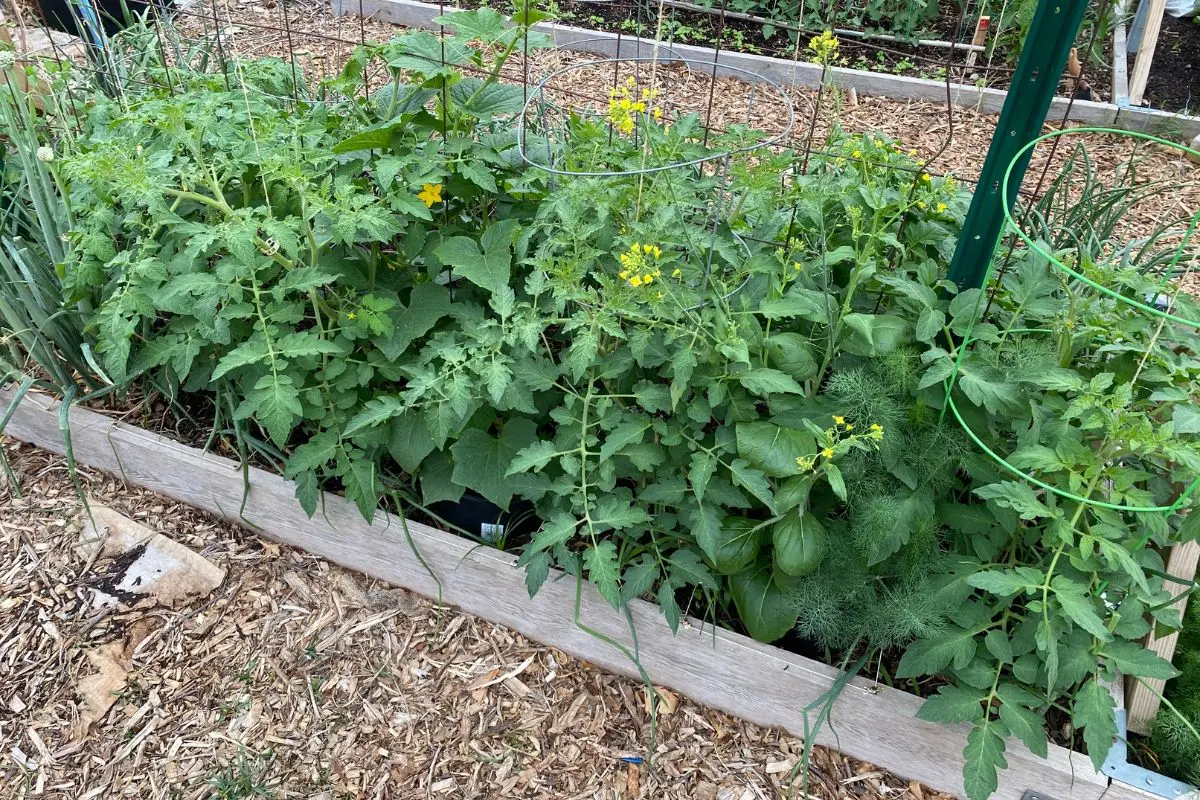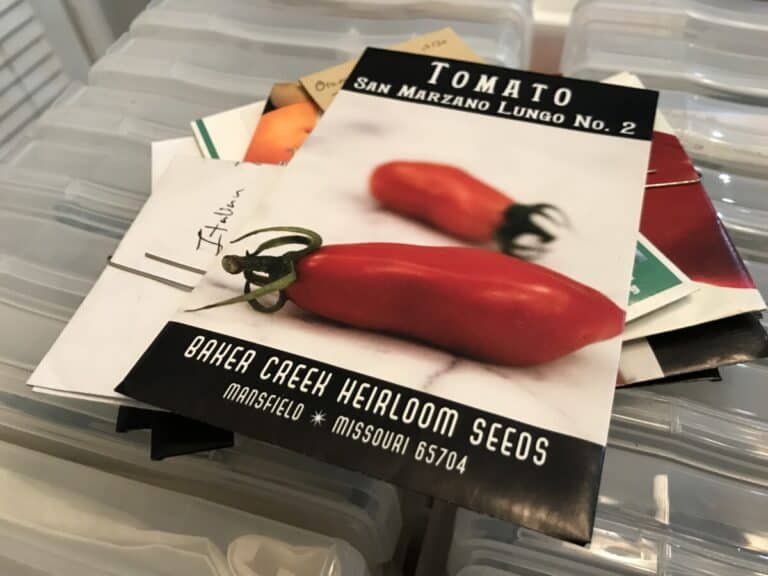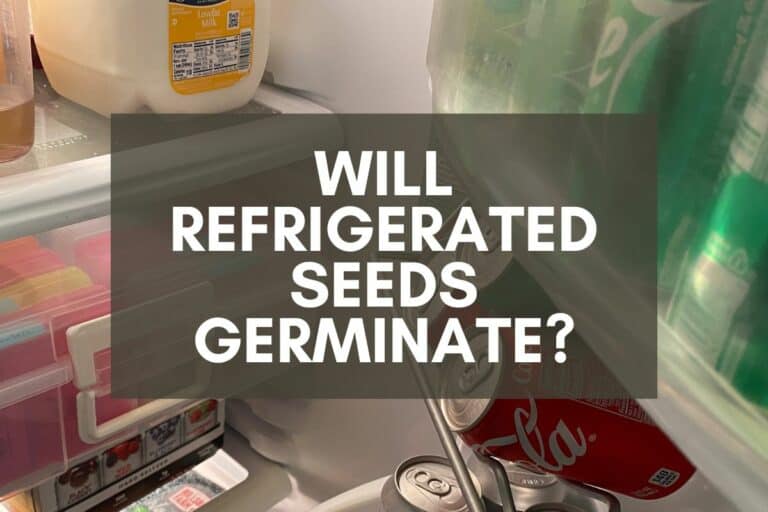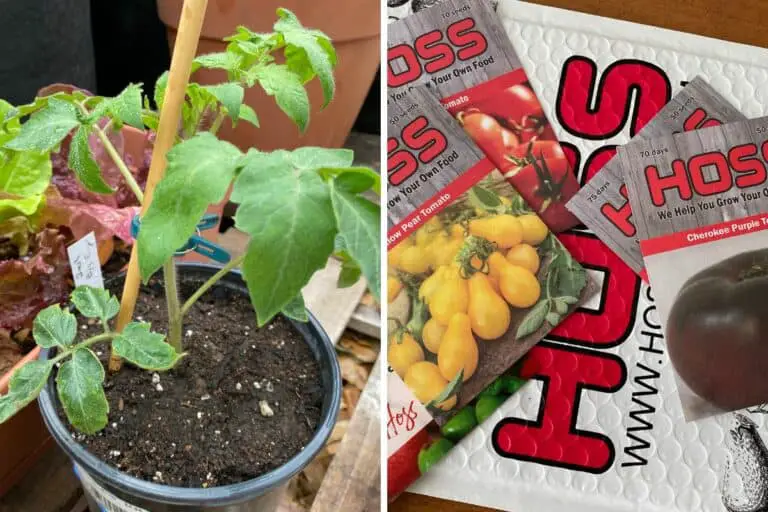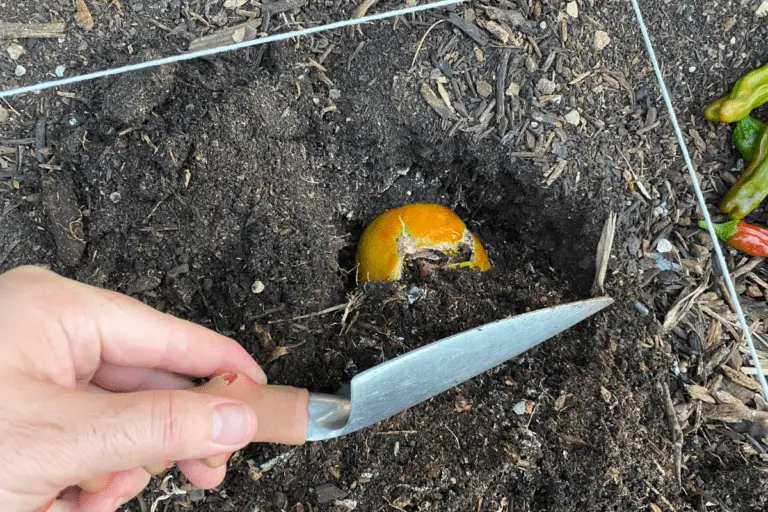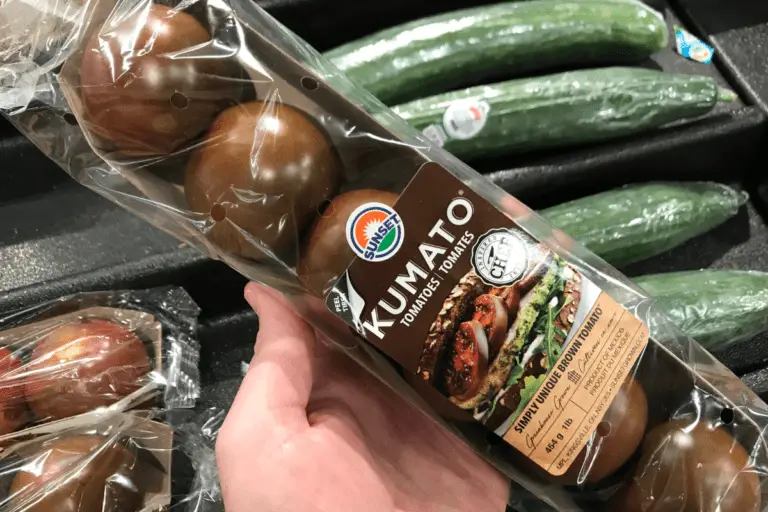How Deep Should Raised Garden Beds Be for Tomatoes?
Raised garden beds are an excellent way to grow all kinds of vegetables, especially if you have limited space or poor soil quality, and growing tomatoes in raised beds is a great way to get bumper crops each year.
But when I was building my first raised garden bed back in 2016, I wasn’t sure exactly how tall to build it, which begs the question: How deep should a raised garden bed be for tomatoes?
Tomatoes will thrive in raised garden beds that are as little as 6 inches tall, assuming the raised beds are not lined at bottom so that plants’ roots can reach down into the native soil. Raised beds that are lined at bottom or installed atop hard surfaces must be at least 18-24 inches tall.
The depth of a raised bed can affect the growth and health of your tomato plants, which is why it’s essential to understand what the recommended depths are for the best results as well as the differences in recommendations for unlined versus lined raised beds and for determinate versus indeterminate tomato plants.
Beginning in 2016 when I installed my first raised garden bed, I made some beginner mistakes.
But I figured out what I did wrong, and I corrected things. Since that time, I’ve had incredible tomato harvests every year, and I want you to grow amazing tomatoes as well.
In this article, I’ll dive into the factors that determine how deep your raised beds should be and provide you with a clear understanding of how to grow the best tomato plants possible in your raised beds.
What Size Raised Bed Is Best for Tomatoes?
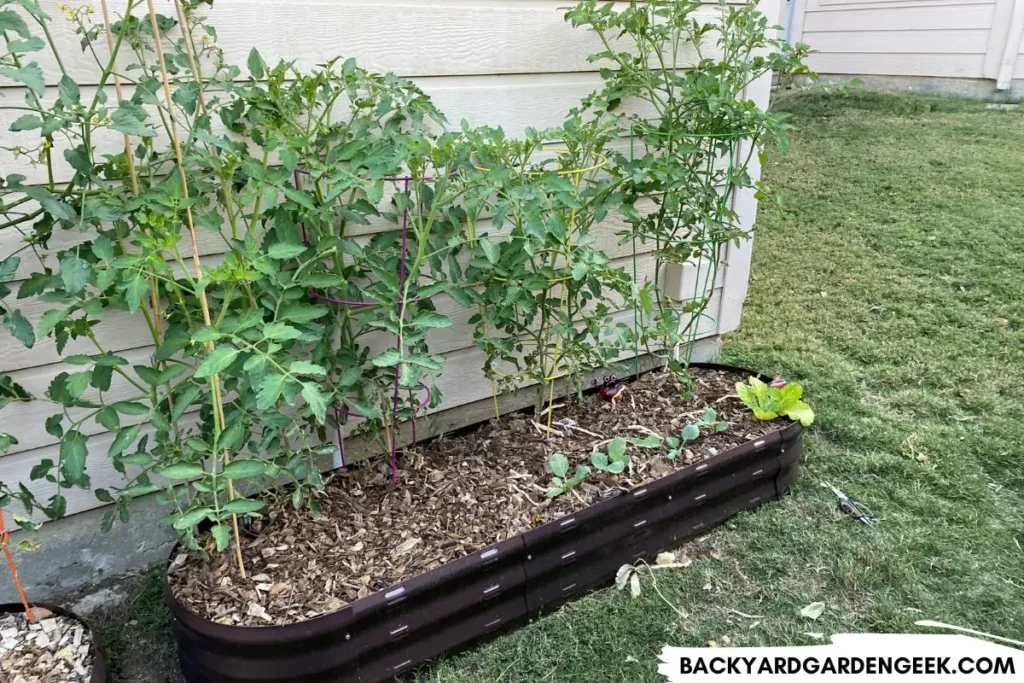
Tomatoes thrive in raised beds because such beds allow for better control over the soil, water, and nutrients that the plants receive. They provide an excellent environment for tomato plants to grow in and produce high-quality, tasty tomatoes.
The size of a raised bed for tomatoes is determined by several factors, including the type of raised bed (unrestricted or restricted) and the type of tomato plant (determinate or indeterminate).
One important note about “unrestricted” versus “restricted” raised beds:
- When I refer to “unrestricted” raised beds, I’m referring to raised beds that have been built or installed atop a ground surface. In these beds, plants’ roots can grow down through the raised bed soil and into the native soil.
- When I refer to “restricted” raised beds, I mean raised beds that have been lined at bottom with thick landscape fabric or installed atop concrete, asphalt, rocky surfaces, patios, or other areas where the roots of the plants in the beds can’t grow down into the native soil.
When it comes to determinate versus indeterminate tomato plants, determinate tomato plants are usually bushier in nature and have a limited growth habit, reaching a maximum height of around 3-4 feet. Dwarf and micro dwarf tomato varieties are even shorter, some as small as 12-18 inches tall.
Unlike determinate plants, indeterminate tomato plants continue to grow and produce fruit throughout the growing season and can reach heights of 6–8 feet tall or more.
These distinctions are crucial to understand since this drastically impacts how deep your raised garden beds should be.
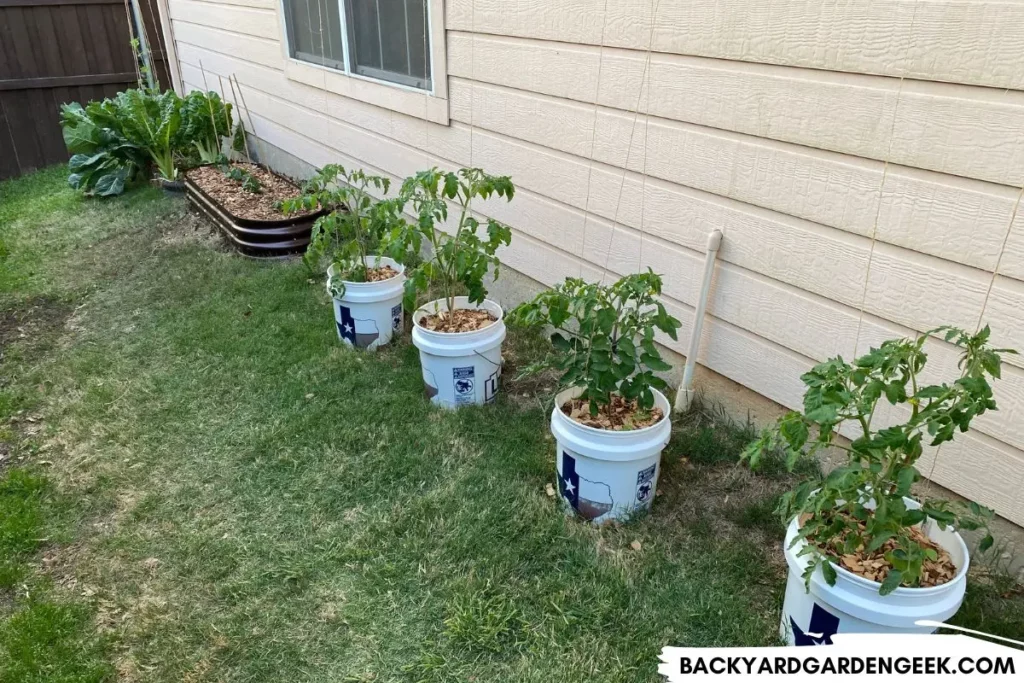
Before going into more detail about these things, let’s take a look at the quick facts. Just be aware that I use IND to refer to “Indeterminate” tomato plants and DET to refer to “Determinate” tomato plants.
Unrestricted Raised Beds
| Depth | IND | DET | Dwarf | Micro Dwarf |
|---|---|---|---|---|
| 1-6 inches | Yes | Yes | Yes | Yes |
| 7-12 inches | Yes | Yes | Yes | Yes |
| 13-18 inches | Maybe | Yes | Yes | Yes |
| 19-24 inches | No | Yes | Yes | Yes |
| 25-30 inches | No | Yes | Yes | Yes |
| 31-36 inches | No | Yes | Yes | Yes |
Restricted Raised Beds
| Depth | IND | DET | Dwarf | Micro Dwarf |
|---|---|---|---|---|
| 1-6 inches | No | No | No | No |
| 7-12 inches | No | No | No | Yes |
| 13-18 inches | Maybe | Maybe | Yes | Yes |
| 19-24 inches | Maybe | Yes | Yes | Yes |
| 25-30 inches | No | Yes | Yes | Yes |
| 31-36 inches | No | Yes | Yes | Yes |
The first factor to consider when determining the size of a raised bed for tomatoes is the type of raised bed.
In the overview I’ve provided above, there are two types of raised beds: unrestricted and restricted.
These are not generally recognized gardening terms but terms I use to distinguish between 2 different kinds of raised bed gardening strategies.
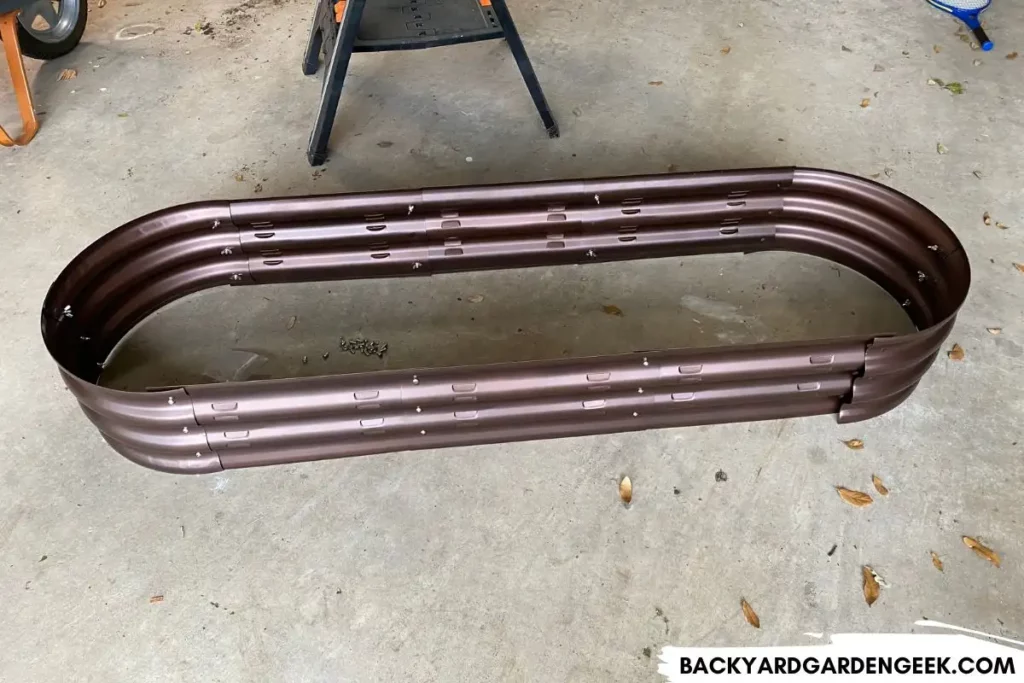
An unrestricted raised bed is a raised bed that does not have a barrier at bottom and is not installed atop concrete, asphalt, or other rocky or hard surfaces. As I’ve noted above, these raised beds allow the roots of the plants to grow through the raised bed soil and into the native soil.
The great thing about these beds is that they can be very short, as little as 4-6 inches tall even, because the tomato plants’ roots will grow down into the native soil.
I’ve grown absolutely stunning tomato plants in raised beds that are literally only 4 inches tall. That’s because the ground below them is just fine. It’s not the greatest soil (because it’s got lots of clay), but the plants have plenty of soil to thrive in.
A restricted raised bed, on the other hand, is one where the bottom of the raised bed is either lined with a barrier, such as a plastic liner or landscape fabric, or installed atop surfaces that don’t allow the plants’ roots to reach through the raised bed soil and into the native soil below.
The problem here is twofold when it comes to tomato plants:
- First, restricted raised beds must be at least 12 inches tall (preferably more) for tomatoes to do okay.
- Second, restricted raised beds can’t be too tall if you’re hoping to grow indeterminate tomato plants in them.
If you grow indeterminate tomato plants in a tall raised bed, you’ll either have to a) give lots of thought to supporting structures, b) top the plants off so they don’t keep growing, or c) pull out your ladder whenever you want to harvest tomatoes.
That’s because indeterminate tomato plants can easily grow 6-8 feet tall. If you start the plants in a raised bed that’s already 30 inches tall, there’s no way you’re going to be able to support plants that are growing 10-12 feet off the ground unless you’ve got a great trellis system set up.

On the flip side of things, these tall raised beds are great for determinate, dwarf, or micro dwarf tomato plants, so if you’re okay not growing indeterminate plants, you can grow all of the other varieties in very tall raised beds.
If you’d like to know more about how I grow my tomato plants each year, check out these articles:
- Germinating Seeds from Fresh Tomatoes in 7 Easy Steps
- Germinating Tomato Seeds with Heat Mats: A Beginner’s Guide
- How Often Should You Water Tomato Seeds and Seedlings?
- How Many Tomato Plants Do I Need for 3, 4, or 5 People?
- Separating Tomato Seedlings: A Step-by-Step Guide
As you can see from above, the depth of your raised beds is entirely dependent on whether you place them atop your lawn or bare ground or whether you line the bottoms of the beds or place them on top of a hard surface such as concrete, asphalt, or a patio.
Let’s take a moment to break down the advantages and disadvantages of determinate versus indeterminate plants.
Growing determinate tomato plants in raised beds has several advantages, including the following:
| Space Saving | Determinate tomato plants take up less space, making them ideal for small raised beds or for gardeners who want to grow multiple plants in a single raised bed. |
| Easy maintenance | Determinate tomato plants are easier to maintain because they have a limited growth habit, making it easier to control the height and spread of the plants. |
| Succession Planting | Because determinate plants have a limited growing period, they’ll often wind down before the growing season is over. That means you can replace them with other plants that’ll grow in that space, ensuring that your raised beds keep producing even if your determinate tomato plants have stopped. |
The main disadvantage is the fact that there are many, many incredible tomato varieties that are indeterminate plants.
If you install a raised bed that doesn’t work for indeterminate varieties, you’ve cut yourself off form all kinds of amazing tomatoes that you could have otherwise grown.
Growing indeterminate tomato plants in raised beds, on the other hand, has both advantages and disadvantages, including the following:
Advantages
| Room for Growth | Unrestricted raised beds give indeterminate tomato plants all the room they’ll ever need for proper growth, no matter how deep they are. |
| Plant Supports | Raised beds make it easy to consider various ways to support and stabilize indeterminate plants. |
| Continued Growth | Indeterminate tomato plants continue to grow and produce fruit throughout the growing season, which means you’ll be getting tomatoes all season long. |
| Pest Management | Tomato pests like aphids, flea beetles, spider mites tend to attack lower-hanging branches first, then work their way up the plant. If you catch them early, you can treat your plants with soapy water, neem oil, or other natural insecticides and trim off lots of lower branches. The plant will continue growing new branches to replace the ones you’ve cut off. |
Disadvantages
| More Maintenance | Indeterminate tomato plants require more maintenance because they continue to grow and produce fruit, which means they need to be staked or supported to prevent them from falling over. |
| Support Problems | If you grow indeterminate tomatoes in tall raised beds, they’ll quickly grow beyond your reach. You’ll either have to cut off the tops to stop them from growing taller, build supporting structures to handle the growth, or haul a ladder out to your raised beds every time you want to harvest tomatoes. |
Overall, I think the advantages of growing indeterminate tomatoes in raised beds far outweigh the disadvantages, assuming you’re growing them in unrestricted raised beds.
As you can see, the depth of raised beds for tomato plants depends on several factors, including the type of raised bed and the type of tomato plant you’re growing.
All in all, your plants need enough soil for their roots to develop properly, but you’ve also got to keep their growth patterns in mind or you might end up causing yourself headaches later on in the growing season.
By understanding the recommended depth for each type of raised bed and tomato variety, you’ll be able to ensure that your tomato plants receive the proper care they need to grow and produce an incredible harvest.
What Are the Best Tomato Plants for Raised Beds?
I’ve seen some bloggers suggest that there are certain tomato varieties that do better than others when it comes to growing in raised beds, but I disagree completely with such arguments.
Take another look at the tables above. Notice that it’s not the variety of tomato plant that matters but the kind of plant?
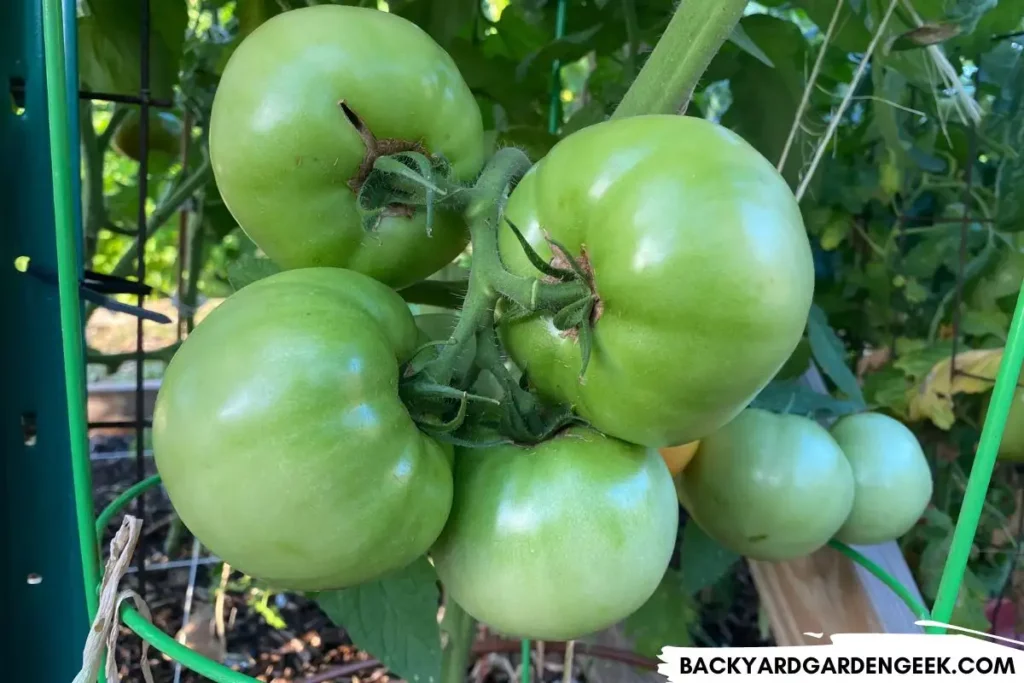
Here’s the thing: If you’ve got unrestricted raised beds that are no more than 12 inches tall, the best indeterminate tomato varieties to grow in those raised beds are the varieties that do best in your particular region.
The same goes for restricted raised beds and for determinate, dwarf, and micro dwarf varieties.
Let me say this once more: The “best” plants for raised beds are the plants that thrive in your particular growing region, which are not necessarily the varieties you’ll find at big box home improvement stores.
Here in North Texas, there are lots of tomato varieties I can’t grow because the summers are far too hot for them to survive and thrive.
However, there are other varieties that do just fine in this environment. They’ll stop growing during July and August–because it’s just too hot outside–but they’ll pick back up once late September rolls around, and they can often grow through the end of November and even into December!
I’ve written about where to buy tomato seeds, storing tomato seeds in the refrigerator, growing tomatoes from hybrid seeds, and the pros and cons of growing your plants from seed or purchasing them at the store.
If you want to know more about growing tomatoes, check out those articles to learn from my mistakes and successes.
Here’s a short list of the varieties that I’ve had lots of success with here in Zone 8a:
- Black Krim
- Celebrity
- Chef’s Choice Orange
- Cherokee Purple
- Early Girl
- Large Barred Boar
- Paul Robeson
- Pork Chop
- San Marzano Lungo 2
- Sungold
- Sweet 100
- Yellow Pear
- Zebra Cherry
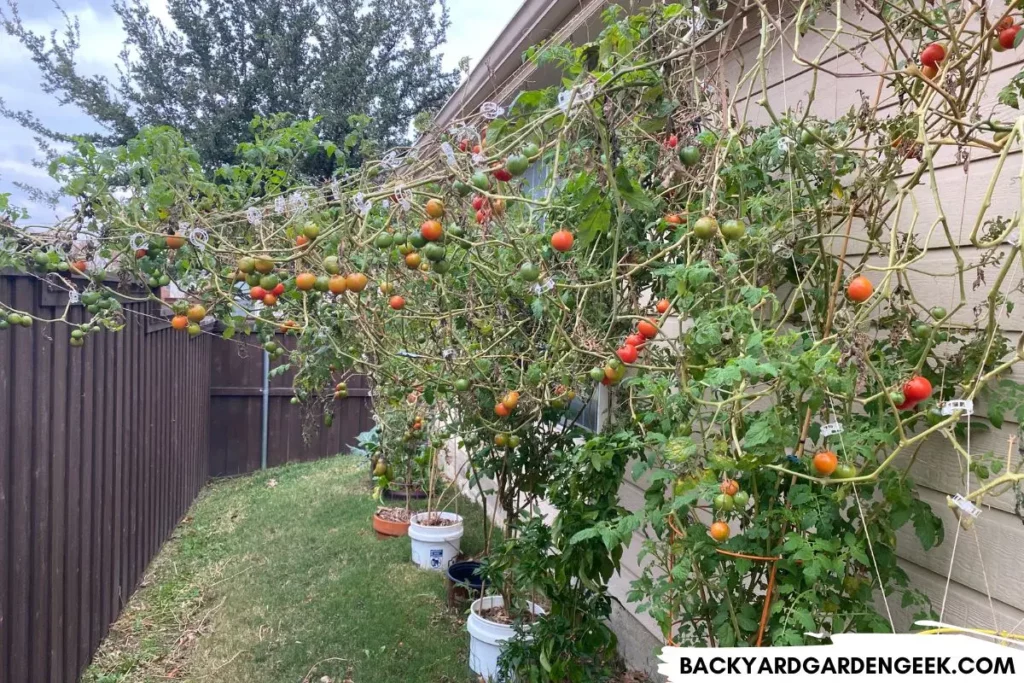
Long story short, do some research into your particular growing region and get in touch with local gardeners who’ve been growing tomatoes.
Find out which varieties work well, then nurture those seedlings and grow them in your raised garden beds.
More Information
If you’d like to read more about my experiences growing tomato plants, I recommend these related articles:
- Can You Plant Whole Tomatoes? What to Know Before You Try
- Can You Use Neem Oil on Tomato Plants? 10 Reasons Why
- Do Tomato Seeds Need Sunlight to Germinate: 5 Planting Tips
- Germinating Tomato Seeds in Water: A Step-by-Step Guide
- Tomato Seedlings: Do They Need Heat After Germination?
- When Should I Transplant Tomato Seedlings? Expert Tips
